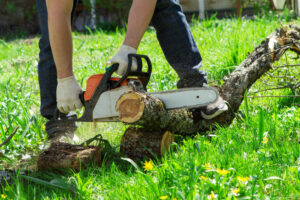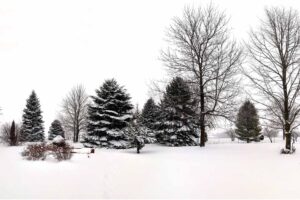Buffalo, New York, is known for its natural beauty and lush landscapes, and one of the best ways to contribute to this natural splendour is by planting and caring for trees. Trees not only enhance the aesthetics of your property but also provide numerous environmental benefits. In this comprehensive guide, we’ll delve into the when, why, and how of planting and nurturing trees in Buffalo, New York.
 Why Planting Trees in Buffalo Matters
Why Planting Trees in Buffalo Matters
Before delving into the specifics of tree planting, it’s essential to understand why it matters. Trees are more than just ornaments; they play a vital role in Buffalo’s ecosystem. They help clean the air, offer shade during hot summers, and serve as homes for local wildlife. Additionally, trees contribute to energy conservation, lower heating and cooling costs, and increase property values.
Choosing the Right Tree for Buffalo’s Climate
Buffalo’s climate can be challenging, with cold winters and hot summers. When selecting trees for your property, consider their adaptability to Buffalo’s climate. Hardy, native species are often the best choice. These trees have evolved to withstand the region’s weather extremes and are more likely to thrive.
Factors to Consider When Choosing a Tree:
Energy Efficiency: Opt for deciduous trees that provide shade in the summer but allow sunlight through in the winter, reducing heating and cooling costs.
Shade: If your goal is to create shaded areas, choose trees with broad canopies for ample coverage.
Color: Some trees offer vibrant foliage or blossoms, adding aesthetic appeal to your property.
Fruit-Bearing Trees: Consider planting fruit trees to enjoy fresh produce and attract local wildlife.
Low Maintenance: If you prefer low-maintenance trees, avoid species that shed flowers, pods, or leaves frequently.
 When to Plant Trees in Buffalo
When to Plant Trees in Buffalo
The best time to plant trees in Buffalo is during their dormant season, typically in the fall after leaves have dropped or in late winter/early spring before new growth begins. Planting during these periods allows the roots to establish before the demands of new top growth in the warmer months.
While planting can be done at other times, extra care and watering may be required, especially during the first summer.
How to Properly Plant a Tree
Dig the Hole: Ensure the hole is three times wider than the tree’s root ball and slightly shallower to avoid planting too deep.
Inspect the Roots: Check for circling roots around the root ball and prune them if necessary to encourage outward growth.
Placement: Position the tree so the root flare remains above the ground, where large roots emerge from the trunk.
Backfill: Fill the hole with native soil, avoiding amendments that can hinder root development.
Water and Mulch: Water the newly planted tree as needed, and apply a 2- to 4-inch layer of mulch to conserve moisture and regulate soil temperature. Keep mulch away from the tree trunk to prevent pests and diseases.
 Caring for Your Newly Planted Tree
Caring for Your Newly Planted Tree
The first year after planting is crucial for a tree’s establishment. Monitor watering needs, avoiding overwatering, which can cause yellowing leaves. Avoid adding fertilizers during the first year, as they can harm young roots. Instead, focus on proper watering and mulching.
Connect with 10xtree for Tree Services in Buffalo
If you’re ready to enhance your Buffalo property with trees or need expert tree care, contact 10xtree. Our team specializes in tree planting, maintenance, and removal in Buffalo, New York. Visit our website to learn more about our services and how we can help you create a greener, healthier Buffalo.
Additional Resources:
- Tips for Beginner Gardeners
- Browse Other Gardening Guides
- Find Landscaping Tools
By planting and caring for trees in Buffalo, you’re contributing to the city’s natural beauty and sustainability. Follow these guidelines to create a thriving urban forest that benefits both your property and the environment.






